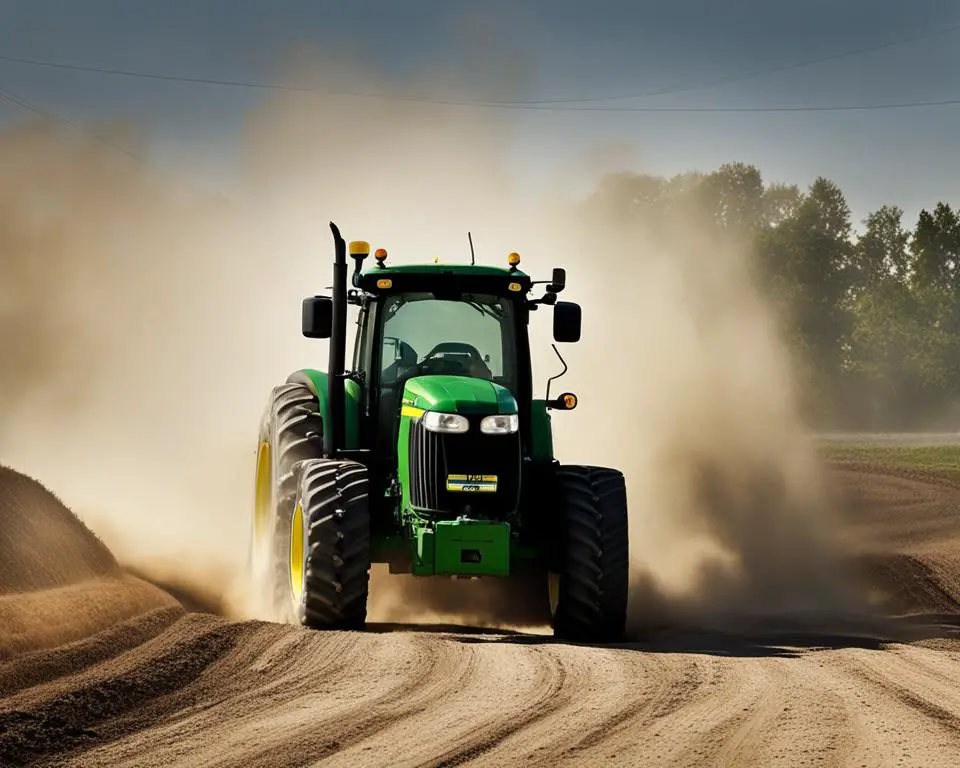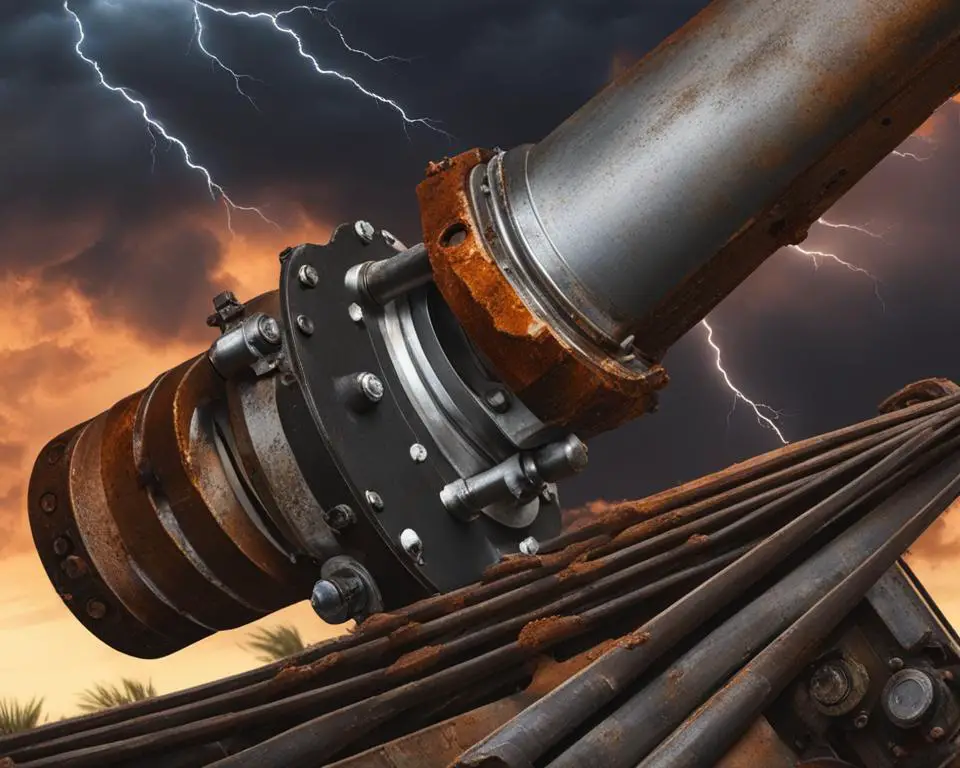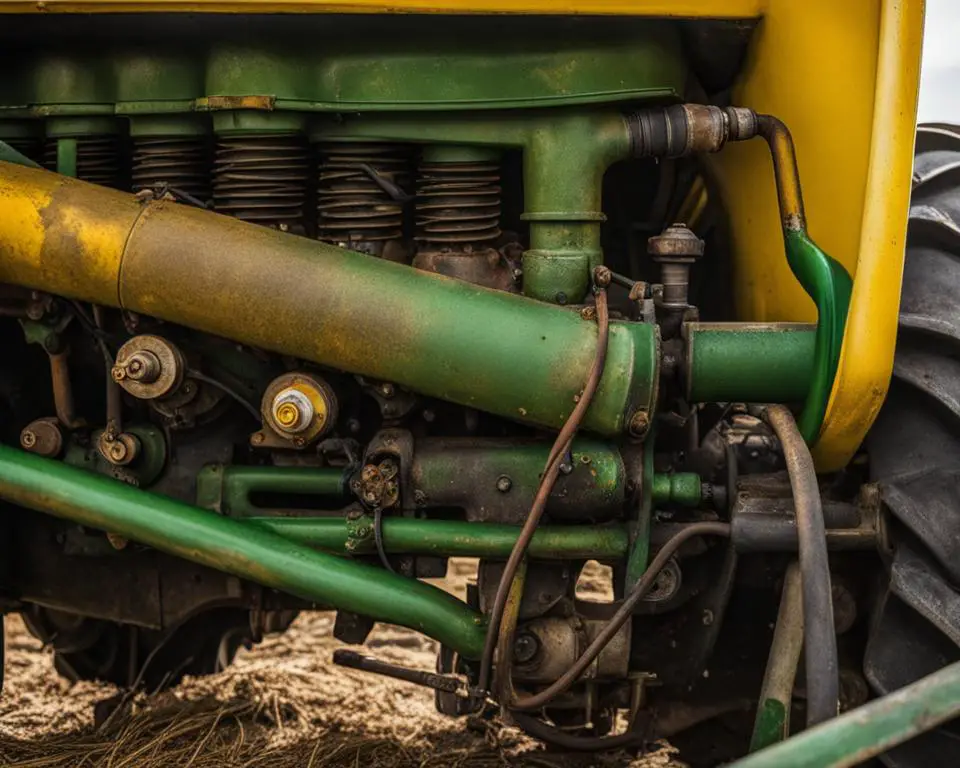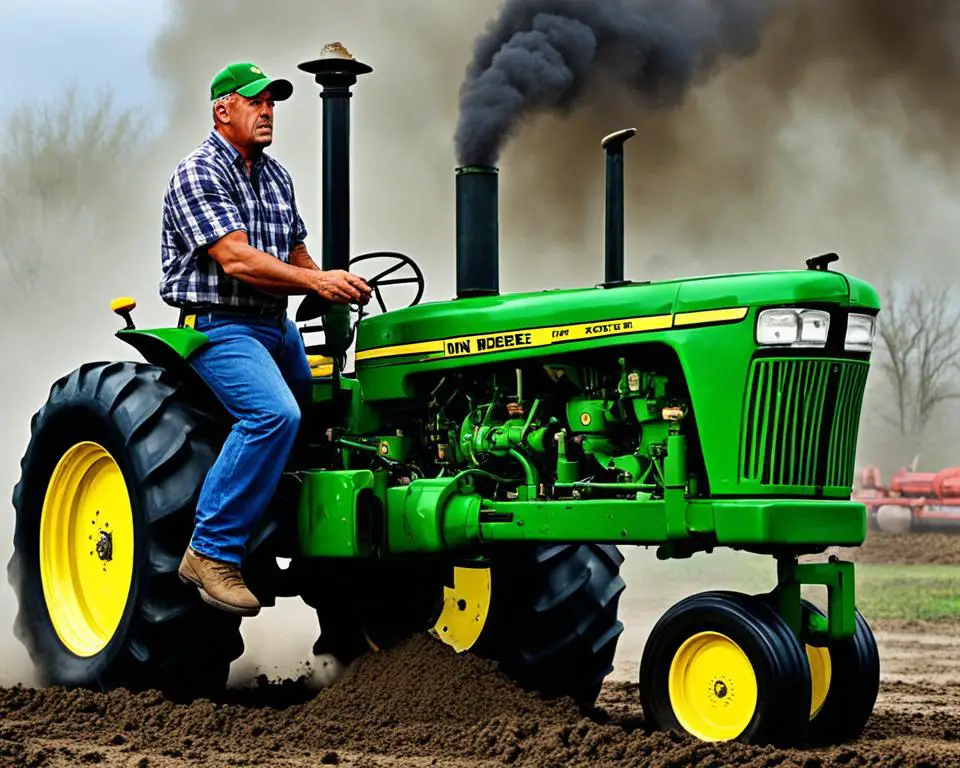Are you experiencing problems with your John Deere 2210 compact utility tractor? You’re not alone. While this versatile machine is known for its reliability and efficiency, it can encounter common issues that may impact its performance. In this article, we’ll explore the most common problems faced by John Deere 2210 owners and provide you with expert fixes to get your tractor back on track.
From starting problems to power loss, transmission issues to steering difficulties, low hydraulic pressure to PTO malfunctions, this article will cover a range of issues that can arise during the operation of your John Deere 2210. By understanding these problems and their causes, you’ll be better equipped to diagnose and resolve them effectively.
Regular maintenance and timely troubleshooting are key to overcoming these challenges. Whether it’s checking fuel delivery, cleaning filters, inspecting hydraulic systems, or adjusting clearance valves, our detailed guide will walk you through the necessary steps to keep your John Deere 2210 running smoothly.
With the right knowledge and proactive approach, you can ensure that your John Deere 2210 remains a reliable workhorse for all your farming, gardening, and lawn maintenance needs. Let’s dive into the common issues and fixes for the John Deere 2210.
The Engine Won’t Start
One of the most common issues faced by John Deere 2210 owners is the engine’s failure to start. This starting problem can be extremely frustrating and can hinder productivity. Several factors can contribute to this problem, including fuel delivery issues, clogged fuel injectors, and a damaged cylinder block.
Fuel delivery problems, such as clogged fuel filters or damaged fuel injectors, can restrict the flow of fuel to the engine, resulting in starting difficulties. In such cases, it is essential to inspect and clean or replace the clogged fuel filters. Additionally, cleaning the fuel injectors can help restore proper fuel delivery to the engine.
Another potential cause of the engine not starting is a damaged or worn cylinder block. The cylinder block houses the pistons and plays a vital role in the combustion process. If the cylinder block is damaged or worn, it can affect engine compression, leading to starting issues. In such cases, it is necessary to replace the damaged components within the cylinder block to restore proper engine function.
To address the problem of the engine not starting, the following steps can be taken:
- Ensure that there is enough clean fuel in the tank.
- Inspect and replace any clogged fuel filters.
- Clean the fuel injectors to restore fuel delivery.
- If necessary, replace damaged components within the cylinder block.
By following these steps, owners of the John Deere 2210 can resolve the engine starting issues and ensure the smooth operation of their tractor.
Engine Loses Power
One of the common issues that owners of the John Deere 2210 may encounter is a loss of engine power. This problem can significantly affect the tractor’s performance and productivity. To address this issue, it is crucial to identify and resolve the underlying causes.
Several factors can contribute to the engine losing power. One possible cause is a clogged air filter. Over time, dust and debris can accumulate in the air filter, restricting the airflow to the engine. This can result in reduced power output and inefficient combustion. Therefore, it is important to regularly clean or replace the air filter to maintain optimal engine performance.
Another potential cause of engine power loss is an engine overload. Operating the John Deere 2210 beyond its recommended capacity can put excessive strain on the engine, leading to a decrease in power. It is essential to ensure that you are not exceeding the tractor’s maximum load capacity and operating within its intended limits.
Misadjusted clearance valves can also contribute to a loss of engine power. The clearance valves play a critical role in regulating the flow of fuel and air into the engine. If these valves are misadjusted, the combustion process may be affected, resulting in reduced power output. To address this issue, it is recommended to have the clearance valves inspected and readjusted by a qualified technician if necessary.
By addressing these common causes of engine power loss, owners of the John Deere 2210 can restore optimal performance to their tractor. Regular maintenance, such as air filter cleaning or replacement, and proper operation within the tractor’s capacity can help prevent engine power loss and ensure smooth and efficient operation.
Transmission Oil Overheats
The John Deere 2210 can experience transmission oil overheating, which can lead to various problems such as gear slippage and grinding or shaking of the tractor. This can be caused by inadequate transmission fluid levels, a clogged oil filter, damaged cooling components, or an overloaded transmission. To fix this issue, it is important to:
- Check and fill the transmission fluid to the proper level.
- Clean or replace the oil filter.
- Repair or replace any damaged cooling components.
Inadequate Fluid Level
Inadequate transmission fluid level can cause the transmission oil to overheat in the John Deere 2210. It is essential to regularly check the fluid level and ensure it is filled to the proper level indicated in the tractor’s manual. Low fluid levels can lead to insufficient lubrication, increased friction, and heat buildup within the transmission.
Clogged Oil Filter
A clogged oil filter can impede the smooth flow of transmission oil, causing it to overheat. Over time, debris and contaminants can accumulate in the filter, reducing its effectiveness. Regularly inspecting and cleaning or replacing the oil filter will help maintain proper oil flow and prevent overheating.
Damage to Cooling Components
Damaged cooling components, such as a malfunctioning radiator or cooling fan, can disrupt the cooling process of the transmission oil. This can result in excessive heat buildup and overheating. It is important to inspect the cooling system regularly for any signs of damage or malfunction and repair or replace any compromised components.
Difficult Steering
Difficulty in steering is another common problem with the John Deere 2210. This can be caused by factors such as improperly inflated tires and damage to the steering column. It can also be due to air in the steering column.
To address this issue, it is important to adjust the tire pressure to the recommended levels, repair or replace any damaged steering column components, and bleed the air out of the steering column as necessary.

| Causes | Symptoms | Solutions |
|---|---|---|
| Improperly inflated tires | Difficulty in turning the steering wheel, uneven steering response | Adjust the tire pressure to the recommended levels |
| Damage to the steering column | Loose or snapped steering wheel, unusual noises during steering | Inspect and repair or replace any damaged steering column components |
| Air in the steering column | Unsteady steering, vibrations in the steering wheel | Bleed the air out of the steering column using the appropriate procedure |
Low Hydraulic Pressure
Low hydraulic pressure is a common issue that can significantly impact the performance of the John Deere 2210. If left unresolved, it can lead to hydraulic system damage and hinder the tractor’s ability to operate optimally. This problem can arise due to several factors, including:
- Low hydraulic oil levels
- Dirty or clogged hydraulic fluid filter
- Faulty hydraulic pump
- Damaged hydraulic components
To rectify this issue and restore optimal hydraulic pressure, a thorough inspection of the hydraulic system is essential. Look for any signs of leaks, wear, or damage, and promptly address any issues discovered. Replace or repair any damaged components, such as hoses or fittings, to ensure proper functionality.
Another critical step is to clean or replace the hydraulic fluid filter. A dirty or clogged filter can restrict the flow of hydraulic fluid, resulting in decreased pressure. Regularly inspect the filter and clean or replace it as needed to prevent potential problems.
In some cases, the culprit behind low hydraulic pressure may be a faulty hydraulic pump. If the pump is not functioning correctly, it will not generate sufficient pressure to power the hydraulic system. Consider inspecting the pump and, if necessary, replace it to restore proper hydraulic pressure.
Lastly, ensure that the hydraulic oil is refilled to the required level. Inadequate oil levels can directly contribute to low hydraulic pressure. Check the manufacturer’s specifications for the correct hydraulic oil type and capacity, and refill accordingly.
| Causes of Low Hydraulic Pressure | Solutions |
|---|---|
| Low hydraulic oil levels | Refill hydraulic oil to the required level |
| Dirty or clogged hydraulic fluid filter | Clean or replace the hydraulic fluid filter |
| Faulty hydraulic pump | Inspect and, if necessary, replace the hydraulic pump |
| Damaged hydraulic components | Thoroughly inspect the hydraulic system and replace or repair any damaged components |
By addressing low hydraulic pressure promptly and effectively, you can avoid potential hydraulic system damage and maintain the optimal functioning of your John Deere 2210.
PTO Problems
When it comes to the John Deere 2210, PTO problems can arise, causing inconvenience during operation. Some common issues that users may encounter include difficulty in turning the PTO shaft, the PTO not engaging when activated, a noisy PTO shaft, and a stuck PTO shaft. These problems can be attributed to the wear and tear or damage to various components, such as the clutch pack, PTO bearings, PTO brake, PTO switch, and PTO shaft itself.
To address these PTO problems, it is crucial to inspect the affected components for any signs of damage or excessive wear. If damage is detected, prompt repairs or replacements are necessary to ensure the smooth functioning of the PTO system. Regular maintenance and lubrication of the PTO components can also help prevent these issues from occurring.

By staying alert to potential PTO problems and addressing them promptly, tractor owners can avoid disruptions and maximize the efficiency of their John Deere 2210. Ensure to follow the manufacturer’s guidelines for proper maintenance and seek professional assistance if necessary to maintain the longevity of your PTO system.
The Battery Won’t Charge
The John Deere 2210 tractor relies on a functional battery to power its engine. However, there are instances when the battery won’t charge, leading to starting issues or a loss of power. This can be frustrating, but there are several potential causes and corresponding fixes to address this problem.
Possible causes and solutions for a battery that won’t charge:
- Defective Battery: A defective battery can prevent proper charging. If you suspect that the battery is faulty, it is crucial to replace it with a new one of the correct specifications.
- Corroded Terminals: Corrosion on the battery terminals can impede the flow of electrical current. To resolve this issue, clean the terminals using a mixture of baking soda and water or a specialized terminal cleaner.
- Loose Cables: Loose or disconnected cables can result in poor electrical connections, affecting the battery’s charging. Ensure that all cable connections are secure and tight to maintain a consistent flow of electricity.
- Worn Belt Tension: An excessively loose or worn-out belt can cause insufficient power transfer to the battery, preventing it from charging effectively. Adjust or replace the belt tension according to the manufacturer’s guidelines to ensure proper charging.
By addressing these potential issues, you can troubleshoot and resolve the battery charging problem in your John Deere 2210 tractor. Remember to follow safety precautions and consult the tractor’s user manual or seek professional assistance if needed.
A faulty battery can cause charging issues in the John Deere 2210 tractor.
Starter Problems
Starter problems can be a common issue with the John Deere 2210, often attributed to battery-related issues. When encountering starter problems, it is crucial to evaluate the battery’s condition and address any underlying factors contributing to the problem.
Low battery capacity is a leading cause of starter problems. Over time, batteries can lose their charge and struggle to provide sufficient power to start the engine. To remedy this, it is essential to charge or replace the battery if necessary, ensuring that it meets the recommended capacity for optimal performance.
“The battery is the heart of your tractor’s electrical system. Ignoring a weak or faulty battery can lead to various issues, including starter problems.”
Electrical connection issues can also disrupt the starter’s functionality. Loose or corroded connections can hinder the flow of electricity, resulting in starting difficulties. It is crucial to inspect and repair any damaged or loose connections, ensuring a secure and reliable electrical circuit.
“A sturdy electrical connection is vital for a smooth startup. Checking and addressing any issues with the electrical connections can help resolve starter problems.”
In some cases, a faulty starter motor may be the root cause of the problem. If the starter motor fails to engage or function as intended, it can prevent the tractor from starting. To tackle this issue, it is necessary to replace the faulty starter motor with a new one to restore proper functionality.
By addressing starter problems promptly, farmers and tractor operators can ensure a seamless startup process and prevent any disruptions to their work.

Common Causes and Solutions for Starter Problems
| Cause | Solution |
|---|---|
| Low battery capacity | Charge or replace the battery if necessary |
| Electrical connection issues | Inspect and repair damaged or loose connections |
| Faulty starter motor | Replace the faulty starter motor |
Problems Raising the 3-Point Hitch
The 3-point hitch system of the John Deere 2210 can sometimes encounter difficulties when it comes to raising attachments. This issue often stems from several factors, including inadequate hydraulic oil, a damaged hydraulic pump, and damaged hydraulic components. To address and resolve these problems effectively, it is essential to follow the proper troubleshooting steps:
- Refill the hydraulic oil to the appropriate level. Ensure that there is enough oil in the system to provide sufficient pressure for raising attachments.
- If the hydraulic oil is cold, warm it up gradually. Cold oil may have higher viscosity, impeding the smooth operation of the hydraulic system.
- Thoroughly inspect the hydraulic components for any signs of damage or wear. Components such as hoses, seals, and cylinders should be checked for leaks, cracks, or other abnormalities.
- Replace any damaged hydraulic components that may be causing the hitch-raising issues. Ensure that the replacements are genuine John Deere parts for optimal compatibility and performance.
- Verify that all connections within the hydraulic system are secure. Loose connections can result in hydraulic pressure loss and hinder the proper functioning of the 3-point hitch.
By following these steps and addressing the root causes of the problem, you can overcome the difficulties in raising the 3-point hitch system of the John Deere 2210, ensuring smooth and efficient operation.
Conclusion
Despite the John Deere 2210 having its fair share of common issues, it remains a reliable and efficient tractor. Many of these problems can be resolved by following proper maintenance and troubleshooting procedures. By conducting regular inspections, maintaining fuel and fluid levels, and conducting timely repairs, users can prevent and resolve many of the common problems associated with the John Deere 2210. With the right care and attention, this tractor will continue to serve its users effectively.
FAQ
What are some common issues with the John Deere 2210?
Some common issues with the John Deere 2210 include starting problems, power loss, transmission issues, steering difficulties, low hydraulic pressure, PTO problems, noisy transmission, battery charging issues, and problems with raising the 3-point hitch.
Why won’t the engine start?
The engine may fail to start due to fuel delivery issues, such as clogged fuel filters or damaged fuel injectors. It can also be caused by a damaged or worn cylinder block, which affects engine compression.
What can cause the engine to lose power?
Possible causes for engine power loss in the John Deere 2210 include a clogged air filter, engine overload, and misadjusted clearance valves.
How can I fix transmission oil overheating?
Transmission oil overheating can be fixed by checking and filling the transmission fluid to the proper level, cleaning or replacing the oil filter, and repairing or replacing any damaged cooling components.
Why is steering difficult?
Difficulty in steering can be caused by factors such as improperly inflated tires and damage to the steering column. It can also be due to air in the steering column.
What can cause low hydraulic pressure?
Low hydraulic pressure can be caused by factors such as low hydraulic oil levels, a dirty or clogged hydraulic fluid filter, a faulty hydraulic pump, or damaged hydraulic components.
What are some common PTO problems?
Common PTO problems include difficulty in turning the PTO shaft, the PTO not engaging, a noisy PTO shaft, and a stuck PTO shaft. These issues can be caused by wear or damage to components such as the clutch pack, PTO bearings, PTO brake, PTO switch, and PTO shaft.
How can I fix the battery charging issues?
Battery charging issues can be fixed by replacing a defective battery, cleaning the corroded terminals, tightening any loose connections, replacing worn-out wiring, and adjusting or replacing the worn-out belt tension.
What can cause starter problems in the John Deere 2210?
Starter problems can occur due to issues with the battery, such as low battery capacity, electrical connection problems, or a faulty starter motor.
How can I resolve issues with raising the 3-Point Hitch?
Problems with raising the 3-Point Hitch can be resolved by refilling the hydraulic oil to the proper level, warming the fluid if it is cold, inspecting and replacing any damaged components within the hydraulic system, and ensuring all connections are secure.


Leave a Reply